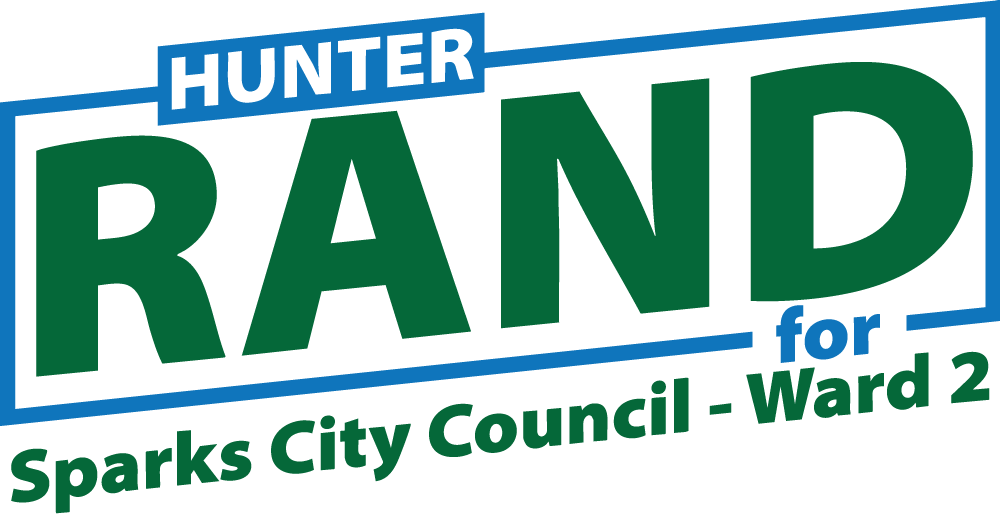Data Centers - And Why They Matter to Sparks and Ward 2
Data centers are everywhere, quietly running in the background of modern life. Every phone call, text message, email, online search, credit card swipe, and streaming show passes through them. Even cash transactions often leave a digital footprint that a data center will eventually process.
And yet, despite their constant presence, most people know very little about what data centers are or how they work. As of August 14, 2025, Cloudscene reports there are 5,427 data centers in the United States - but they might as well be invisible to the public eye.
So, what exactly is a data center?
Oxford Languages defines it as “a large group of networked computer servers typically used by organizations for the remote storage, processing, or distribution of large amounts of data.” Wikipedia’s definition is broader, but let’s focus on the big ones - the massive warehouse-style facilities filled wall-to-wall with servers instead of boxes.
There are three main models worth noting:
Private data centers – Owned and operated by a company solely for its own needs. Think Facebook, with buildings full of servers dedicated to its own services.
Hybrid data centers – A company runs its own operations and also leases computing resources to others. Google and Amazon fall into this category, offering both their own products and cloud hosting for other businesses.
Colocation facilities – A company owns the building and infrastructure, while tenants bring and manage their own servers. This gives smaller companies the power, reliability, and connectivity of a major data center without building one themselves.
While these facilities are essential, they aren’t without controversy - and the consequences often fall on the communities that host them.
One major concern is water consumption. Large data centers can use up to 5 million gallons of water per day, according to the Environmental and Energy Study Institute - roughly the same as a city of 40,000 to 50,000 people. Much of this is due to evaporative cooling, a simple, cheap, and effective method for keeping servers cool, but one that consumes water that can’t be recovered.
Another issue is energy use and infrastructure strain. Here in Nevada, NV Energy is a for-profit utility regulated by the Public Utilities Commission of Nevada (PUCN). Because of how our laws are structured, infrastructure costs are often passed on to ratepayers rather than being covered by the company itself. While the City Council doesn’t directly control this, it can use its influence to push the PUCN toward people-first policies, instead of profit-first ones.
And then there’s the jobs argument. Data center developers often tout job creation as a major community benefit - but the numbers can be misleading. Yes, construction can employ hundreds or even thousands of workers for a year or two. But once a facility is built, staffing drops sharply. A 60,000-square-foot data center might have only 8-to-16 people installing equipment during its build-out phase, and once operational, just 3-to-4 employees running day-to-day operations. That’s a far cry from the lasting job boom some residents are led to expect.
Over time - four, ten, even twenty-five years down the road - the long-term benefits are often far smaller than promised, while the community continues to absorb the costs of infrastructure, resource use, and environmental impact.
We can absolutely have data centers in Sparks. In fact, it’s likely we’ll see proposals coming before the City Council in the near future. But the difference between a data center that benefits the community and one that drains it comes down to leadership - leadership with the courage to prioritize careful planning, transparency, and people-first decision-making. Because when corners are cut, it’s residents who pay the price.
How can we have responsibly planned data centers in Sparks that truly contribute to the community and not just drain it?
Closed-loop Cooling Systems - We need to restrict data center operators to only using air cooling or closed-loop liquid cooling (really, almost anything that isn’t evaporative) to keep servers cold. Water is already scarce in our region, and if we don’t have this requirement and restriction in place - in writing - the impact to our system could be catastrophic, in the short-term, and especially in the long-term. It’s like adding 40,000-to-50,000 residents all at once.
Maximum Size Restrictions - We need to restrict data centers to a maximum size to ensure compatibility with current neighborhoods. I think of Roller Network which offers colocation services to businesses and developers. based in Reno, if you drove by you truly wouldn’t notice they were there. That said, if you look at the Apple Data Center along I-80 East of Sparks, you can see the footprint of that development from space - like many other data centers, it’s massive.
Infrastructure Costs - We need to make sure that costs of infrastructure improvements will be taken care of by the developers and data center operators and not the residents of Sparks and Ward 2. Mainly power, but also roads, specialized emergency response training, and more.


